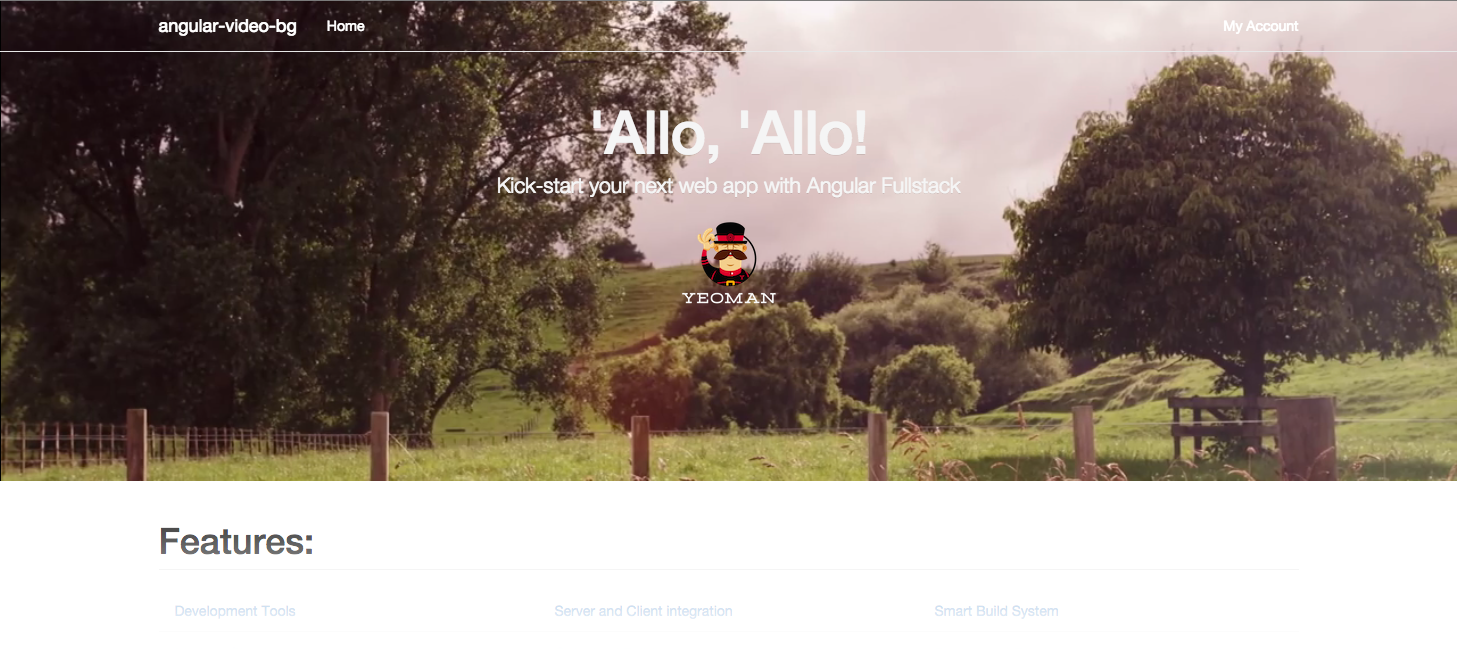
Research
Security News
Malicious PyPI Package Exploits Deezer API for Coordinated Music Piracy
Socket researchers uncovered a malicious PyPI package exploiting Deezer’s API to enable coordinated music piracy through API abuse and C2 server control.
angularjs-video-background
Advanced tools
angularjs-video-background is an [Angular.js](http://angularjs.org/) YouTube video background player directive. It stresses simplicity and performance.
angularjs-video-background is an Angular.js YouTube video background player directive. It stresses simplicity and performance.

Play with the Plunker example
You can also see a demo of the directive here: Angular YouTube Video Background
You can also install the package using Bower.
yarn add angularjs-video-background
Or add it to your package.json file:
dependencies: {
"angularjs-video-background": "~1.8"
}
No dependencies (besides Angular) are required!
To use the library, include the JS file on your index page, then include the module in your app:
app = angular.module('myApp', ['angularjsVideoBackground'])
The directive itself is simply called video-bg. The only required attribute is either videoId (which should be a YouTube video ID) or playlist (which should be an array of video objects, see example in advanced usage section below).
<video-bg video-id="video.id"></video-bg>
There are a number of options that be configured inline with attributes:
| Option | Default | Description |
|---|---|---|
| ratio | 16/9 | Aspect ratio for the supplied videoId. |
| loop | true | If set to false, video will not automatically replay when it reaches the end. |
| mute | true | If set to false, the video's sound will play. |
| mobile-image | YT video thumb | Background image to display if user is on phone or tablet (videos cannot autoplay on mobile devices), default is YouTube video thumbnail. |
| start | null | Video start time in seconds. If set, video will play from that point instead of beginning. |
| end | null | Video end time in seconds. If set, video will play until that point and stop (or loop). |
| content-z-index | 99 | If set, will replace the z-index of content within the directive. |
| allow-click-events | false | If set to true, users will be able to click video to pause/play it. |
| player-callback | null | If provided, player callback method will be called with the YouTube player object as the first and only argument. |
Example:
<video-bg video-id="video.id" ratio="4/3" loop="false" mute="false" mobile-image="'/img/background-img.png'" start="30" end="120" content-z-index="500" allow-click-events="true"></video-bg>
The documentation above is sufficient for most use-cases; however, there are other options below for those that need more advanced integration.
If instead of playing a single video, you need to play several videos in a playlist, you should use the playlist attribute instead of the videoId attribute. The playlist attribute accepts an array of video objects. Each video object must have a 'videoId' property at minimum. Other valid properties that it can have are 'start', 'end', 'mute', and 'mobileImage'. These all do the same thing as the corresponding options on the directive, however, instead of applying to every video they only apply to the current video. Example below of using the playlist attribute:
angular.module('myApp').controller('VideoCtrl', function($scope) {
// Array of videos to use as playlist
$scope.videos = [{
videoId: 'some_video',
mute: false
},{
videoId: 'some_other_video',
start: 10,
end: 50
}];
});
<video-bg playlist="videos"></video-bg>
If you dynamically change this videos array (e.g. add a new video to the list), the new playlist will be loaded and played accordingly.
If you need more control over the video (for example, if you need to play/pause the video on a button click), provide a method with "player" as the only argument to the player-callback attribute.
<video-bg video-id="video.id" player-callback="callback(player)"></video-bg>
angular.module('myApp').controller(['$scope', function($scope) {
$scope.callback = function(player) {
$scope.pauseVideo = function() {
player.pauseVideo();
};
$scope.playVideo = function() {
player.playVideo();
};
};
});
The player object gives you complete access to all of the methods and properties on the player in the YouTube IFrame API.
Tested and working in Chrome, Firefox, Safari, Opera and IE 9+.
To get the project running, you'll need NPM and Yarn. Run npm install or yarn install to install all dependencies. Then run grunt serve in the project directory to watch and compile changes.
If you create new unit test, you can run grunt test to execute all of the unit tests. Try to write tests if you contribute.
FAQs
angularjs-video-background is an [Angular.js](http://angularjs.org/) YouTube video background player directive. It stresses simplicity and performance.
We found that angularjs-video-background demonstrated a not healthy version release cadence and project activity because the last version was released a year ago. It has 1 open source maintainer collaborating on the project.
Did you know?

Socket for GitHub automatically highlights issues in each pull request and monitors the health of all your open source dependencies. Discover the contents of your packages and block harmful activity before you install or update your dependencies.

Research
Security News
Socket researchers uncovered a malicious PyPI package exploiting Deezer’s API to enable coordinated music piracy through API abuse and C2 server control.

Research
The Socket Research Team discovered a malicious npm package, '@ton-wallet/create', stealing cryptocurrency wallet keys from developers and users in the TON ecosystem.

Security News
Newly introduced telemetry in devenv 1.4 sparked a backlash over privacy concerns, leading to the removal of its AI-powered feature after strong community pushback.